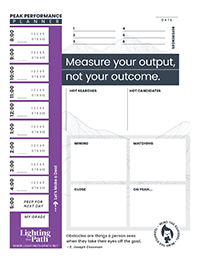On the Gulf Coast, hurricane season is a way of life. We track forecasts, stock up on supplies, and brace for impact, knowing that even the best predictions can shift overnight. It’s a vivid reminder that disruption doesn’t schedule an appointment—it arrives suddenly, often at the worst possible moment. For financial leadership during crisis situations, this is more than a weather story. It’s a leadership lesson in nimbleness that every CFO must master.
Financial leadership during crisis requires the same vigilance as tracking hurricane patterns
Finance, by design, thrives on predictability. Budgets, forecasts, and audits all operate under the assumption that tomorrow will look much like today. Yet hurricanes—both literal and figurative—reveal how fragile those assumptions can be. Financial leadership during crisis moments exposes the limitations of rigid thinking. Predictability bias keeps us clinging to systems that resist change. Rigid structures and approval chains, while designed to reduce risk, often create bottlenecks just when swift action is needed. And the relentless pursuit of efficiency can leave us with no slack, no margin, and no resilience when disruption strikes.
According to McKinsey research on organizational resilience, companies that build adaptive capabilities before crises hit are 2.4 times more likely to emerge stronger. This underscores why effective cash flow management strategies must be paired with crisis preparedness.
Building Financial Nimbleness
Nimbleness requires a shift in mindset. Liquidity, for instance, is more than a financial metric—it’s oxygen. Without flexible cash flow, organizations suffocate under pressure. Contingency reserves, diversified revenue streams, and accessible credit lines may not deliver the highest short-term return, but in times of crisis, they are what keep the organization alive.
Key components of crisis-ready financial management
In the same way, redundancy should not always be seen as waste. Extra capacity, backup systems, or alternative vendors may feel like costly insurance policies, yet they become lifelines when the storm disrupts supply chains or halts operations. The Federal Reserve’s guidance on business continuity emphasizes that crisis financial management requires building buffers that traditional efficiency models might discourage.
Adapting forecasting practices is another mark of nimble leadership. Annual budgets are too rigid for a world where circumstances shift monthly. Rolling forecasts keep leaders grounded in reality and able to respond with clarity. They prevent the paralysis of waiting until year-end to recognize that the landscape has already changed. Our approach to scenario planning for finance teams becomes crucial during these periods of uncertainty.
The Human Side of Crisis Management
Collaborative financial leadership builds organizational strength during uncertain times
Perhaps most importantly, nimbleness demands that financial leaders look beyond the numbers and into the human side of the business. A storm disrupts lives as much as it disrupts balance sheets. Employees can’t focus on productivity if they are worried about their families, homes, or paychecks.
Partnering with HR to provide relocation assistance, payroll continuity, or emergency resources reinforces stability and builds trust at a time when people need it most. Harvard Business Review’s research on crisis leadership consistently shows that organizations with strong people-first financial policies recover faster from disruptions.
This is where building financial resilience extends beyond spreadsheets to encompass the entire organizational ecosystem. Crisis financial management must account for both balance sheet strength and workforce stability.
Preparing for the Inevitable
The lesson of hurricane season is clear: control is an illusion. Our role as financial leaders is not to eliminate uncertainty but to prepare our organizations to bend without breaking. Financial leadership during crisis is less about having perfect answers and more about creating systems, reserves, and relationships that allow us to pivot with confidence when the storm inevitably comes.
The AICPA’s resources on crisis management provide a framework, but the real test comes in implementation. Do we have the liquidity buffers? The communication systems? The decision-making processes that can function under pressure?
Consider developing emergency fund planning for businesses as part of your comprehensive crisis strategy. This isn’t just about having cash reserves—it’s about having accessible, flexible financial resources that can be deployed rapidly when circumstances demand it.
The question is not if disruption will arrive, but how ready we are to lead through it. Financial leadership during crisis situations will define the organizations that not only survive but emerge stronger from whatever storms lie ahead.
Ready to strengthen your organization’s financial resilience? Start by evaluating your current crisis preparedness and building the nimble systems that will serve you when disruption strikes.



